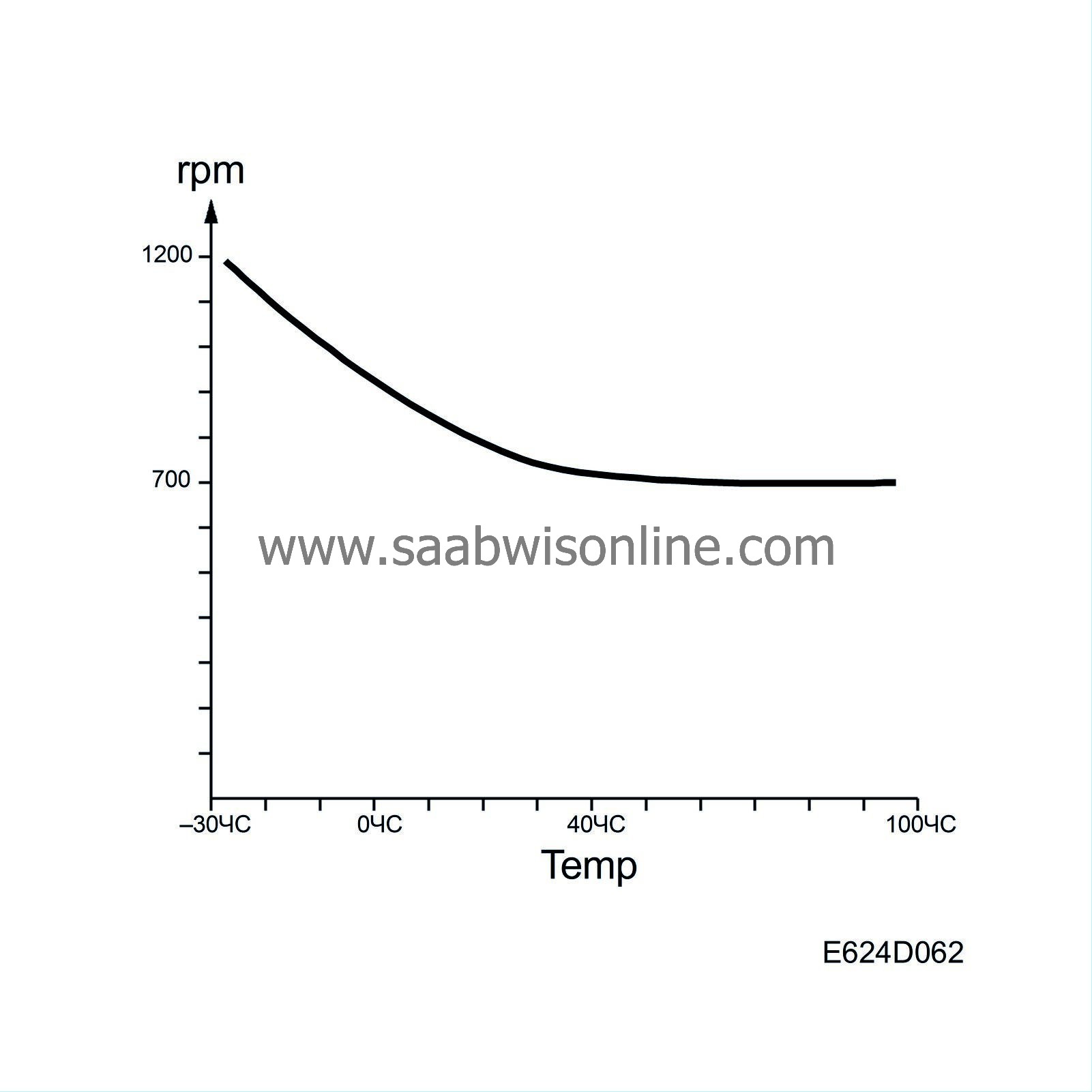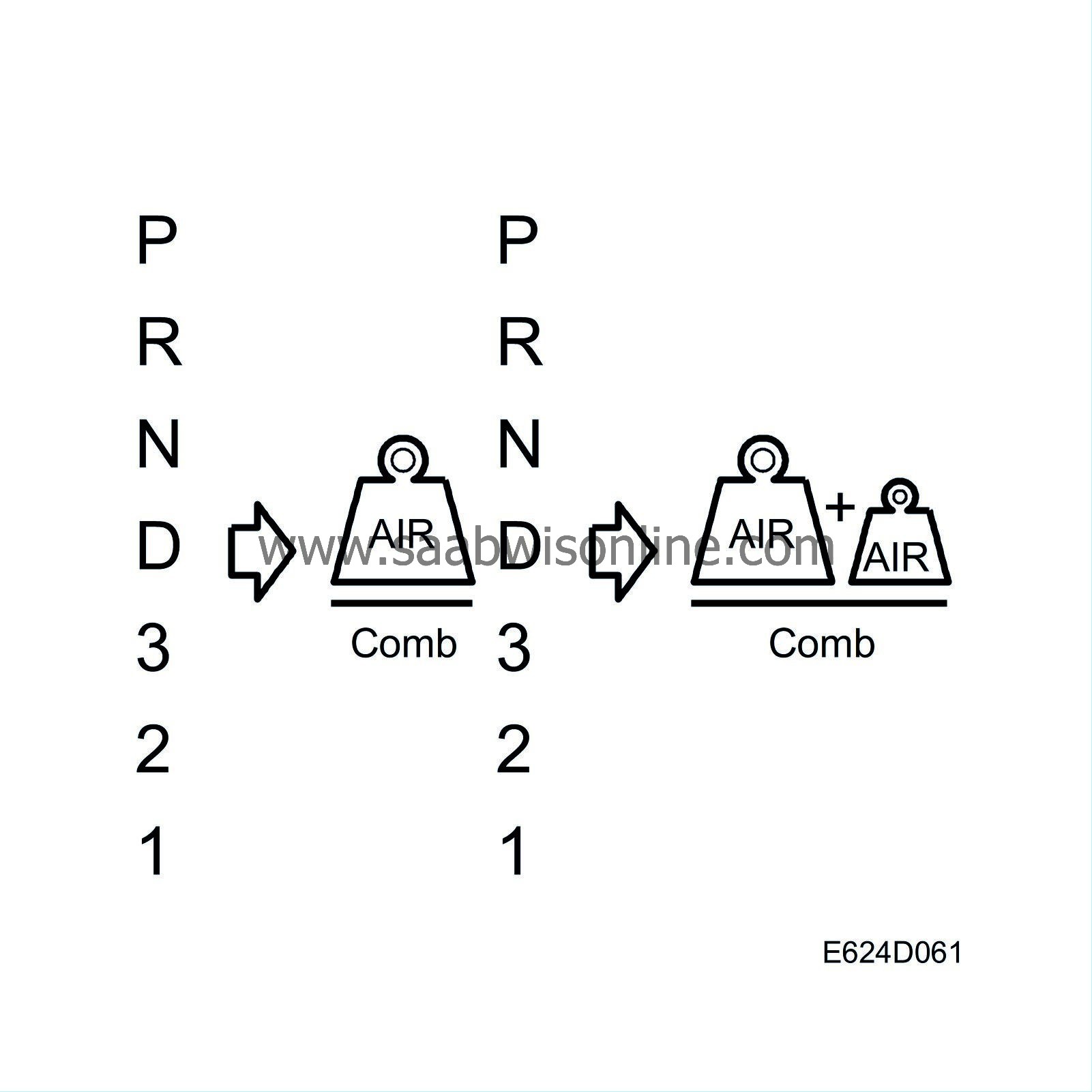Other air request
| Other air request |

| Idle speed control |
When the accelerator pedal is fully released and the vehicle speed is zero the system regulates the air mass/combustion that is required so that the current idle speed will agree with the requested. The air requirement is stored in the control module memory (adaptation). The requested idling speed is stored in a table in the control module memory and is dependent on the coolant temperature. At -30 °C the value is 1200 rpm and as the engine gradually warms up, the requested rpm is reduced to normal idling speed.
DICE sends bus information: “Fast Idling speed”. The value is used by Trionic. DICE sends “ON” if the radiator fan is activated for high-speed at some point during the present driving cycle. The requested idling speed is then slowly raised to 750 rpm to increase the generator and A/C compressor output.
TCM sends bus information "Selector lever position”, unit P, R, N, D, 3, 2 or 1. The value is used by Trionic T7.
When any value other than P or N is selected, the requested air mass/combustion is increased to compensate for the impending load increase. The purpose of this is to compensate fully for the automatic transmission's increased torque requirement to avoid a sudden drop in idling speed before the idle speed control can compensate for this. The air requirement in any position other than P or N is stored in the control module's memory (adaptation).
As soon as the car begins to move, the idle speed control is disabled and the engine receives the adapted air quantity.
| Diagnostics |
| • |
If the idling speed is too high, diagnostic trouble code P0507 will be generated.
If the idling speed is too low, diagnostic trouble code P0506 will be generated. |
|
| • |
Information on the difference between requested idling speed and current speed, and whether the idle speed control is active or not, can be obtained using the diagnostic tool.
|
|



